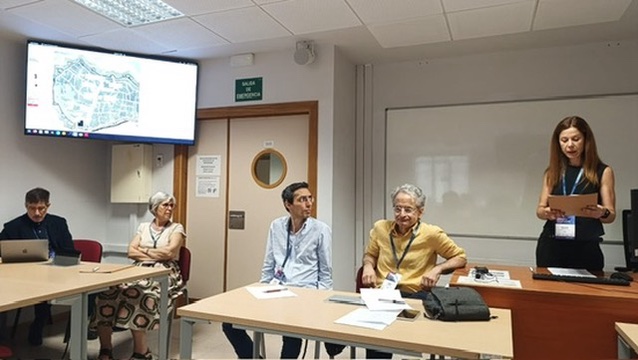On July 9, 2025, the FonUrMed project presented at the IMS Intercongressional Symposium – “Global Mediterranean. Postcolonial Music Histories (16th–20th centuries)” a Study Session entitled “Emissaries of Power. Material and Symbolic Journeys in the Urban Phonospheres of the Hispanic Mediterranean (17th Century).”
Coordinated by Andrea Bombi (University of Valencia), principal investigator of the project, the proposal placed at the center of the debate the urban phonospheres of Barcelona, Naples, Palermo, and Valencia in the Early Modern period, questioning whether the hegemony of the Spanish Monarchy generated a homogeneous soundscape or, on the contrary, one nuanced by local differences.
The session articulated the comparison through two “journeys” of Hispanic power. The first, material, followed the itinerary of Francisco Benavides, Count of Santisteban, who in 1696 returned to Madrid after serving as viceroy of Sardinia, Sicily, and Naples, with ceremonial stops in Rome, Venice, Milan, Turin, Genoa, Marseille, and Barcelona. The analysis of the public receptions that welcomed him in each city makes it possible to reconstruct their sonic textures and the role of music in political scenography. In Palermo, Santisteban promoted the transformation of the waterfront to create a theatrical space for nighttime serenades, integrated with opera, processions, and illuminations; a device compared with the typical nocturnal entertainments of Barcelona, where instrumental groups played from towers and rooftops, adding verticality and projection to the festive city.
The second, symbolic journey examined the diffusion of devotion to the Immaculate Conception as a sonic and ritual tool of political construction. In Naples (1618–1619), the “landing” of the Immaculate and the procession toward the city center consolidated a foundational narrative that endures to this day. In Valencia, by contrast, the preexisting strength of this devotion gave rise to episodes of public dissent: throughout the 17th century—and paradigmatically in 1662—sonic conflict dismantled the image of festive concord and revealed how rituals could become arenas of civic antagonism.
With this dual approach, the Study Session proposed a comparative methodology to measure similarities and differences in sonic production and, above all, to understand the communicative processes that articulate intentions, the manipulation of resources, and the citizens’ reception of messages. The aim is to transcend a mere chronology of events and delve into the symbolic construction of Mediterranean cities, with the intention of extending research toward the southern and eastern Mediterranean and integrating new case studies.
The session, featuring contributions from Andrea Bombi (University of Valencia), Anna Tedesco (University of Palermo), Ascensión Mazuela-Anguita (University of Granada), José María Domínguez Rodríguez (Complutense University of Madrid), and Simone Caputo (Sapienza University of Rome), reinforces FonUrMed’s commitment to an urban history of sound and music attentive to civic-religious rituals, to the circulation of people, objects, and devotions, and to their acoustic traces in public space. This line of research is at the core of the project “Sounding Cities. Urban Phonospheres of the Mediterranean (1500–1900)” (FonUrMed), consolidating a comparative and interdisciplinary agenda that connects politics, religion, and the city through the soundscape.





